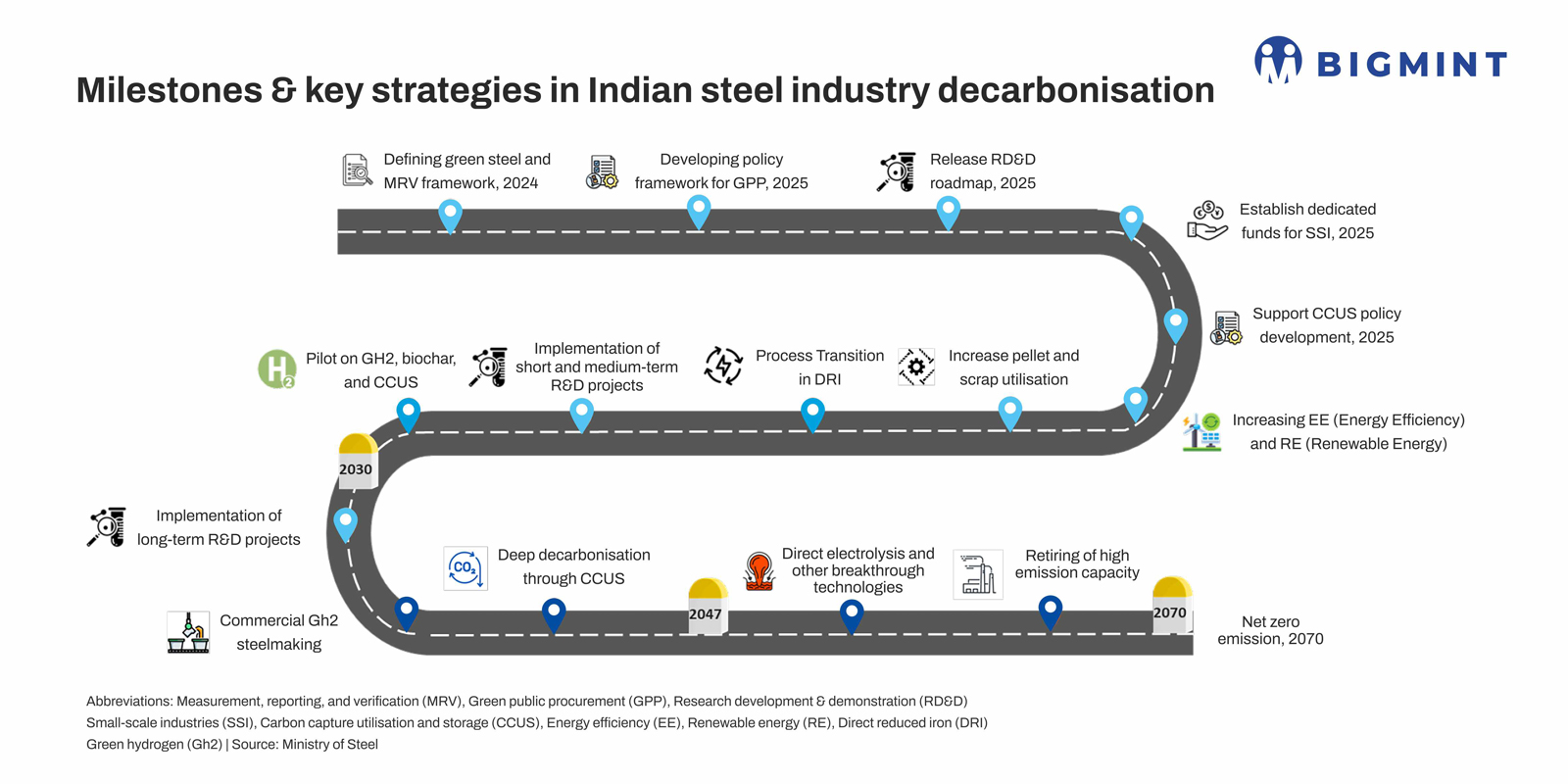Posted on 22 Jul 2025

Morning Brief: The target has been set: 45% of cumulative reduction in carbon emissions from steel production in India by 2030. With 2005 as the baseline year, the government's goal is to reduce the greenhouse gas (GHG) emissions intensity of domestic steel production from over 3 tonnes of CO2 per tonne of crude steel (tCO2/tcs) to 2.2 tCO2/tcs.
The Green Steel classification system, green public procurement, linking green steel definition to the emerging Indian Carbon Market (ICM) are all examples of best practices followed the world over and a giant stride in the right direction.
Undoubtedly, the core technological transformations required to reduce emissions will not happen overnight; extensive R&D is required to develop disruptive technologies suited to the Indian steel industry and Indian conditions.
At the same time, upcoming investments in plant, equipment, machinery and digital technologies will create assets that typically have a lifetime of 40 years at least. It is not plausible to think that these assets will be retired overnight and replaced by low-emissions technologies.
Low-hanging fruits
Therefore, the government has identified energy efficiency and renewable energy uptake as the two "low-hanging fruits" for partly decarbonising existing production processes. The government targets 43.33% of renewable purchase obligation (RPO) for the captive power producers (CPPs) by 2030. This will necessarily lead to higher renewables uptake by the major steel producers in the country.
The perform, achieve and trade (PAT) scheme of the Ministry of Power has contributed to real energy savings and emissions mitigation in the domestic steel sector.
The scheme covers 100% BF-BOF and EAF units in the country. It has been instrumental in driving energy efficiency efforts in the Indian iron and steel industry as the sector achieved total energy savings of 6.137 million tonnes (mnt) of oil equivalent up to Cycle V (2021-22), exceeding the targeted energy savings of 4.575 mnt of oil equivalent and contributed to 24% of total energy savings achieved in the country.
Next steps
Let's take a significant example of the Indian government following global best practices in energy efficiency and emissions mitigation. Currently, there is no benchmarking of energy consumption of the iron and steel industry. Benchmarking energy consumption and setting energy-saving targets for different routes of steelmaking are vital for periodically tracking the progress made in energy efficiency.
Under the PAT scheme, the Bureau of Energy Efficiency (BEE) has extensively worked on baseline assessment for different routes and processes and issued targets for individual plants. In this regard, the Ministry of Steel will work with the BEE to set benchmarks and energy-saving targets for different routes of steelmaking.
The Ministry has as its model the EU Energy Efficiency Directive 2023 which has set an energy-saving target of 11.7% in energy consumption by 2030.
As the PAT scheme gradually transitions to the carbon credit trading scheme (CCTS), shifting the focus from specific energy consumption targets to specific GHG emission (SGE) targets, it is necessary to increase the number of obligated entities (OE) of the iron and steel industry under the CCTS scheme from the present level.
This may ensure that a majority of the small and medium coal-based-DRI facilities and other secondary steel industries are covered under the CCTS scheme and become part of the collective process of energy savings and emissions mitigation
Source:BigMint